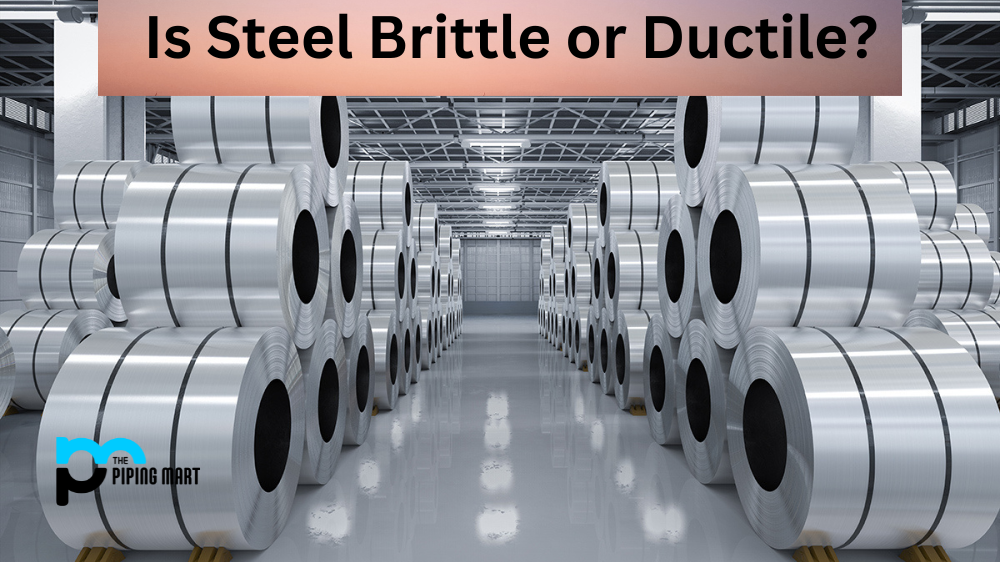Steel is an incredibly versatile material used for everything from skyscrapers to bridges and even jewelry. But whether steel is brittle or ductile can depend on a variety of factors. Let’s break down the differences between steel’s two states and how they affect its use.
Steel is an incredibly versatile metal, and its properties depend on the composition and method of manufacture so it is difficult to generalize about whether steel is brittle or ductile. Generally speaking, low-carbon steels tend to be more brittle than higher-carbon steels due to their greater levels of strain hardening making them less prone to plastic deformation. However, while hardened steel may be too hard and therefore too brittle for many applications, tempered steel can be used as it relies on a fine balancing act between increased hardness and greater ductility. Ultimately, this makes it possible for the steel to be manufactured in a way that makes it both hard enough for the job at hand and malleable enough to remain useful rather than so brittle it will break with any kind of stress applied.
What is Brittle Steel?
Brittle steel is steel that has a low impact strength and can be easily broken into pieces. This type of steel is typically created when there are high levels of sulfur, phosphorus, and other trace elements present in the alloy, which weaken it and make it more susceptible to cracking or fracturing under stress. Because of this, brittle steel has limited structural applications, as it cannot withstand extreme temperatures or pressure.
What is Ductile Steel?
On the other hand, ductile steel is much stronger than brittle steel due to its higher impact strength. This type of steel contains lower amounts of sulfur and phosphorus, allowing it to have a higher tensile strength and greater elasticity than brittle steel. As such, ductile steel can better handle sudden changes in temperature or pressure without cracking or warping, making it ideal for applications such as construction beams and pipes.
However, there are some situations where a combination of both types of steel might be beneficial. For example, certain metalsmithing projects may often utilize both brittle and ductile properties to achieve the desired look; this could include creating intricate patterns with welded components by using a softer grade of ductile steel for support while still having access to the decorative effect provided by a harder grade of brittle metal. In these cases, knowing the difference between the two types can help you create stronger pieces that will last longer without sacrificing aesthetic appeal.
Conclusion:
Steel comes in many forms—some more durable than others—but whether it’s brittle or ductile depends largely on what elements are present in the alloy itself. Knowing the difference between these two states of steel will help you choose which type best suits your project needs so that you can ensure that your work is strong enough to withstand whatever conditions come it’s way!

Hey, I’m Krutik, a casual blogger expert in the metal industry. I am passionate about providing valuable information to my readers. With a background in engineering and construction, I like playing Cricket & watching Netflix shows in my free time. Thank you for visiting my blog, and I hope you find my information helpful!




